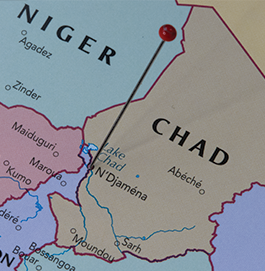Study on the landscape of youth representation in the European Union (EU)
Study on the landscape of youth representation in the European Union (EU)
In June 2019, the European Commission appointed Ecorys to examine the situation for youth representation in democratic life across Europe. The study was timed to support the new cycle of the European Union Youth Strategy (2019-2027), and to build on the findings from the (2019) Eurobarometer survey on the situation of youth in Europe.
In summary, the study objectives were:
- To map EU Non-Governmental Organisations (NGOs) and networks in the field of youth, and to understand how they support youth representation at different scales
- To assess the contribution of EU funding to youth participation and representation
- To identify the new trends in youth participation (digital, youth movements); and,
- To formulate recommendations for future EU funding to youth NGOs.
The research was carried out between June and November 2019. A mixed methods approach was used, including a literature review; a desk-based analysis of EU grant expenditure; a survey of 528 youth NGOs and networks across Europe, and qualitative research with young people in six countries selected to reflect different levels of youth representation, EU grant expenditure, and geographical coverage within the EU.
Key findings
The study found an EU youth sector in transition, with an overall shift away from traditional youth representative structures towards a more diverse and networked civil society. These changes had created both opportunities and gaps. While NGOs operating at local and national levels did not always feel well represented in EU level decision making, there was a strong will to collaborate, and the study underlined a continuing central role for EU ENGOs in supporting the ‘new’ (e.g. digital) spaces for participation.
The research indicated that youth NGOs and networks have grown in their numbers and membership, despite concerns about a shrinking space for civil society. Possible factors include: an expanding EU youth population; increased mobility and access to EU exchange programmes, and rising EU expenditure on youth. However, the study found that this growth has been uneven, with unequal access to youth opportunities across Europe, and among young people according to their status and circumstances.
While EU grant funding has been fundamental to youth NGOs at a time of shrinking public expenditure, smaller grassroots NGOs and youth movements have often found it difficult to access these funds. The study concluded that more flexible and sustained funding streams are needed, while also exploring more creative ways to support partnerships between NGOs and youth movements at EU, national and local levels.
Recommendations
For the European Commission
- To review and streamline the funding envelopes and criteria for EU grant funding, widening access to grassroots NGOs and youth movements.
- To ring-fence additional EU grant funding for disadvantaged youth, and for the grassroots level NGOs that are best placed to reach and engage with them.
- To identify and support mechanisms for engaging young people more directly in decisions regarding the utilisation of EU grant funding.
- To optimise the role of existing EU youth programmes and infrastructure, to support the evolving needs of a networked youth sector.
- To complement existing programmes with new platforms and spaces to support horizontal collaboration between youth NGOs across Europe.
- To develop user friendly and standardised tools to support youth NGOs with monitoring and evaluation, making use of digital and social media data.
For national and local stakeholders in the EU
- To raise awareness of the opportunities for young people to engage in democratic life, and to make this information accessible via youth information services, communications campaigns, and schools-based programmes
- To make the case for a greater share of co-funding for EU grant programmes from national and municipal authorities, to maximise the impact of the funds and to ensure that they are targeted at priorities within each Member State
Final report: Here
Infographic – “The study in statistics”
Further information
- The study was commissioned under the Framework Service Contract to carry out studies supporting European cooperation in education and youth (EAC/47/2014).
- The study team were given access to Education, Audiovisual and Culture Executive Agency (EACEA) databases on Erasmus+ youth grants (2014-18).
- The online survey was cascaded via EU networks; the European Commission’s social media channels, and Eurodesk and Erasmus+ NA representatives in each country. It was made available in English, French, Spanish, German, Italian and Polish.
- The case studies took place in Belgium, Croatia, Italy, Ireland, Lithuania and Sweden. The study team worked youth organisations in each country to recruit young people from diverse backgrounds. The groups were carried out using a semi-structured topic guide and visual materials, and were recorded digitally with respondents’ consent.
References
- Day, L., et. al. (2020) Study on the landscape of youth representation in the EU. Final report. Luxembourg: Publications Office of the European Union.
- Day, L., et. al. (2020) Study on the landscape of youth representation in the EU. Executive summary. Luxembourg: Publications Office of the European Union.
- European Commission (2019) How do we build a stronger more united Europe, the views of young people? Flash Eurobarometer 478. Available online here (Viewed: 02.03.20)
- European Commission (2018) Engaging, connecting and empowering young people: a new EU youth strategy, COM(2018)269, 22 May. Available online here (Viewed: 02.03.20)

12 May 2020
4 minute read
Services
Key Experts
Laurie Day
Technical Director



